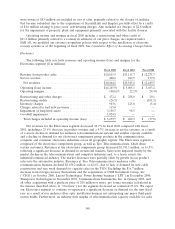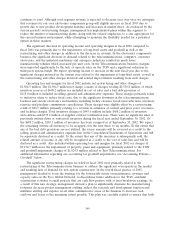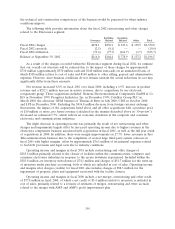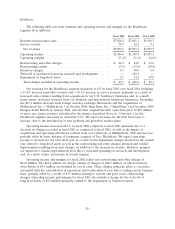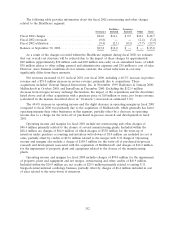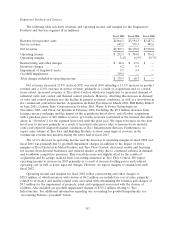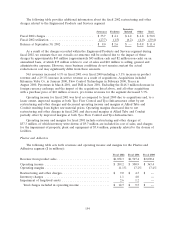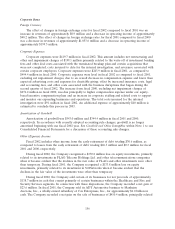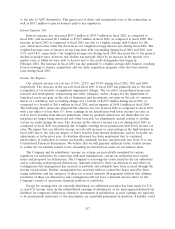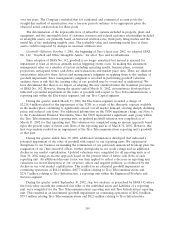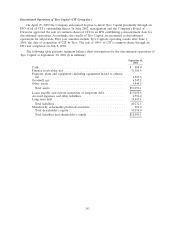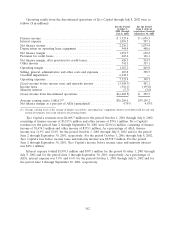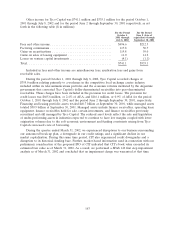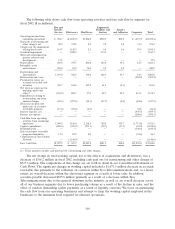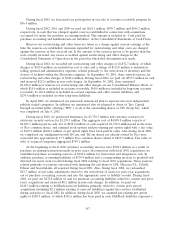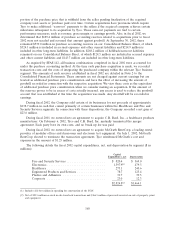ADT 2002 Annual Report Download - page 160
Download and view the complete annual report
Please find page 160 of the 2002 ADT annual report below. You can navigate through the pages in the report by either clicking on the pages listed below, or by using the keyword search tool below to find specific information within the annual report.arise if amounts were distributed by their subsidiaries or if their subsidiaries were disposed. It is not
practicable to estimate the additional taxes related to the permanently reinvested earnings or the basis
differences related to investments in subsidiaries.
Cumulative Effect of Accounting Changes
In December 1999, the SEC issued SAB 101, in which the SEC expressed its views regarding the
appropriate recognition of revenue in a variety of circumstances, some of which are relevant to us. As
required under SAB 101, we modified our revenue recognition policies with respect to the installation
of electronic security systems (see ‘‘Revenue Recognition’’ within Note 1 to our Consolidated Financial
Statements). In addition, in response to SAB 101, we undertook a review of our revenue recognition
practices and identified certain provisions included in a limited number of sales arrangements that
delayed the recognition of revenue under SAB 101. During the fourth quarter of fiscal 2001, we
changed our method of accounting for these items retroactive to the beginning of the fiscal year to
conform to the requirements of SAB 101. This was reported as a $653.7 million after-tax
($1,005.6 million pre-tax) charge for the cumulative effect of change in accounting principle in the fiscal
2001 Consolidated Statement of Operations.
The impact of SAB 101 on net revenues in fiscal 2001 was a net decrease of $241.1 million,
reflecting the deferral of $520.5 million of fiscal 2001 revenues, partially offset by the recognition of
$279.4 million of revenue that is included in the cumulative effect adjustment as of the beginning of the
fiscal year.
We recorded a cumulative effect adjustment, a $29.7 million loss, net of tax, in fiscal 2001 in
accordance with the transition provisions of SFAS No. 133.
Critical Accounting Policies
The preparation of consolidated financial statements in conformity with GAAP requires
management to use judgment in making estimates and assumptions that affect the reported amounts of
assets and liabilities, disclosure of contingent assets and liabilities and the reported amounts of
revenues and expenses. The following accounting policies are based on, among other things, judgments
and assumptions made by management that include inherent risks and uncertainties. Management’s
estimates are based on the relevant information available at the end of each period.
Long-Lived Assets—Management periodically evaluates the net realizable value of long-lived assets,
including property, plant and equipment, the TGN and intangible assets, relying on a number of factors
including operating results, business plans, economic projections and anticipated future cash flows. We
carry long-lived assets at the lower of cost or fair value. Since judgment is involved in determining the
fair value of long-lived assets, there is risk that the carrying value of our long-lived assets may be
overstated or understated.
We wrote-off a significant portion of the TGN during fiscal 2002, and management continues to
monitor developments in the fiberoptic capacity markets. It is possible that the assumptions underlying
the impairment analysis will change in such a manner that a further impairment in value may occur in
the future. In addition, we may experience additional TGN impairments if the downturn in the
telecommunications industry continues.
The Company generally divides its electronic security assets into various asset pools: internally
generated residental systems, internally generated commercial systems and accounts acquired through
the ADT dealer program (discussed below in Amortization Method for Customer Contracts).
With respect to the Company’s depreciation policy for security monitoring systems installed in
residential and commercial customer premises, the costs of these systems are combined in separate
pools for internally generated residential and commercial account customers, and generally depreciated
158


